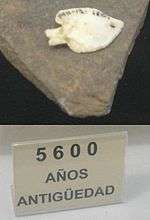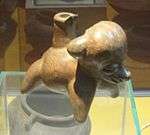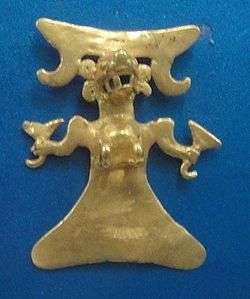El Ceibo Museums
.jpg)
“El Ceibo” is a major Museum in the Ometepe island in what once were the tobacco farm “Tel Aviv” kilns, known by its former name “El Refugio”, in the community of Sacramento, 10 kilometers from Moyogalpa in Lake Cocibolca or Lake Nicaragua administratively island belongs to the Rivas Department. The name of the island derives from the Nahuatl: ōme 'two' and tepētl 'mountain (s)', since it is almost entirely composed of two volcanic cones: Concepción (volcano) and Maderas volcano.
Access to the Museum is free to island residents, has a modest entrance fee of US $ 6 for foreign tourists to visit both museums and US $ 4 for domestic visitors.
The museum requires multilateral support to increase the exhibition area as well as scientific research on many pieces, to enhance information about the articles and to support scientific studies of the important archaeological area.
Due to the little external visitor’s influx, the limited income of the Museum is not sufficient for maintenance and operation. All of which is financed by own resources of the private museum.
Museum History
The museum has two specific sections on two separate buildings, one is Nicaraguan numismatics,[1] and another about prehispanic archaeology of the area.[2]
The archaeology exhibition area has six exhibition halls in 200 square meters, two-story exhibition, and is unique in Ometepe, the only one equipped with air conditioning to preserve the important archaeological heritage exhibit.
The Museum was founded in 2007 by Moises David Ghitis Rivera, Nicaraguan philanthropist, on an agricultural and cattle farm of his property in the island of Ometepe. It is the only prehispanic private museum in the island of Ometepe, with a collection of more than 1500 archaeological pieces, which are on permanent display.
Prehispanic archaeology Museum
On the first floor of the Museum is the Ceramic Hall, displaying urns, metates (grindstones) and stone tools.
On the second floor are women representation, the Pottery Hall, varieties and body ornaments room; the 1, 500 pieces on display have been found throughout the island, by different farmers, others were held privately as families heritage and were donated to the Museum.
Petroglyphs
The outer courtyard of the Museum displays 16 petroglyphs specimens, found in the area, 13 of which were found in the Madera volcano, 2 on the Museum grounds owned by Moses Ghitis and 1 is of unknown origin.
The island has many petroglyphs made as of 300 BCE.
Ancient Native Tomb
Upon entering the museum, in the First Hall, the most striking display is the recreation of a prehispanic tomb; it was found and studied 15 years ago by Ghitis Rivera, 700 meters from the Museum now. During the recovery process, it was mapped identifying location of human remains and the artifacts contained.[3]
The prehispanic tomb was reconstructed within the Museum; it contains teeth, bones placed in a ceramic vase, a jade pendant, an animal teeth necklace, an eagle head tripod and a gold shaman, hence it is inferred that the remains belong to a very important person of Ometepe ancestors.
The origin of the gold Ometepe article opens an interesting topic of research, regarding its origin, meaning, etc.
Oldest pieces of the collection

Flint fish-shaped

Spearhead, estimated age of 5600 years.[4]
Tripod, this piece was found in the “Finca Los Angeles”, according to archaeologists Humberto Leon and Bosco Moroney, was dated to approximately 2800 years ago.[4]
Xulo Dog, ceramic figure, these dogs were important, natives fed them and eat them. Piece 2500 years old [5]
Ancient Trade

The collection of this Museum offers important evidence of trade that existed in the region in prehispanic times, since the presence of various items indicate relationships with other regions such as El Salvador and Honduras, pieces were found that originated in these countries and presumably gold pieces from Colombia. Other pieces found have distinctive Maya, Inca, and Aztec influences.
Exhibition Halls
The following is a brief description of the various halls and its contents.
Tools
This hall exhibits different types of tools that were manufactured and used by our ancestors, as follows:
- Mallets
- Flint Stone and obsidian Arrow tips and spearheads
- Farming tools
- Kitchen utensils
- Weighs for fishing nets
- Petroglyphs
- Grinding stones or metates, three supports, 4 supports, unsupported, curved, table type, flat, with feline heads, etc. (The museum has over 50 of these pieces).
Funerary Urn hall
This hall exhibits different types of funeral urns, manufactured and used by prehispanic natives,as follows:
Urn Shoe Type Urn Round Type Urn Vessel Type
Ceramic Hall – Orosi Phase 3000 - 500 BCE
During this period, ceramic manufactured was monochromatic or a single tonality, color inks were not used.
Ceramic Hall - Tempisque Phase 500 - 300 BCE
During this period begins to develop bi-chrome ceramics, Slipped-Incised and monochrome.
Ceramic Hall – Bagaces Phase 300 - 800 CE
This period already manufactures ancient polychrome ceramics, tri-chrome ceramic: red, black and beige.
Ceramic Hall – Sapoá Phase 800 – 1350 CE
This period manufactures medium polychrome ceramic and papagayo ceramics.
Ceramic Hall - Ometepe Phase 1350 - 1550 CE
During this period late polychrome ceramics, Luna ceramic, castillo Sgraffito, and black side.
Acknowledgments
The Museum and its Board of Directors recognize the following institutions that in some fashion have supported the important Museum Mission:
- Nicaraguan Culture Minister.[6]
- Nicaraguan Tourism Institute.[7]
- ETEA FOUNDATION, for development and cooperation, from Rivas.[8]
- Archaeologists Humberto León & Bosco Moroney
- Proyecto Desarrollo del Turismo en el sur occidente de Nicaragua
- Proyecto triangulo del sur
Research Project
The Museum intends to perform a scientific study on the existing heritage and research in specific areas in order to investigate the origins of the civilizations that inhabited the island, as well as probable dates for the different occupation periods. With the help of friends archaeologists of the museum and Nicaraguan Culture Ministry.
Notes
- ↑ "El Ceibo Museums, Numismatic Section". El-Ceibo (in Spanish). Retrieved October 13, 2010.
- ↑ "El Ceibo Museums, Archaeology Section". El-Ceibo (in Spanish). Retrieved October 13, 2010.
- ↑ "Ometepe Touristic Information". 2010 (in Spanish). Ghitis Rivera, Moisés D. Retrieved October 13, 2010.
- 1 2 "Leon, Humberto & Moroney, Bosco". Field Study (in Spanish). Nicaraguan Culture Institute. Retrieved October 13, 2010.
- ↑ Xulos o perros a la barbacoa. “...e quando alguna fiesta principal comen estos perros “xulos” por el más precioso manjar de todos, e ninguno come la cabeza...” (Crónicas de Oviedo)
- ↑ http://www.oei.es/cultura2/Nicaragua/11d.htm Ministerio de Cultura de Nicaragua.
- ↑ http://www.intur.gob.ni/ Instituto Nicaragüense de Turismo
- ↑ http://www.fundacionetea.org/index.php?m=31
External links
- NicaTour Información turística (Spanish)
- Nicaragua Actual Información turística (Spanish)
- Hacienda Magdalena Los petroglifos de la isla de Ometepe (Spanish)
- Ometepe Images